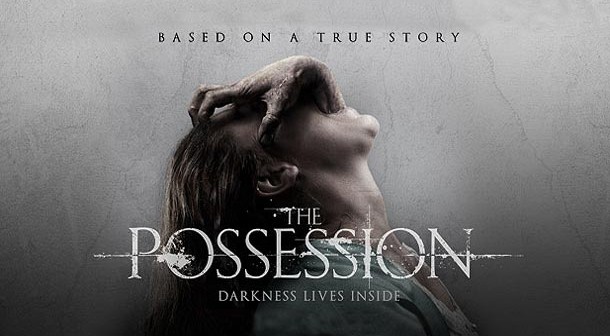The Possession is a horror film that was inspired by an L.A. Times article written by Leslie Gorstein back in the summer of 2004. The article concerned a dybbuk box sold on eBay that allegedly contained an evil spirit known as a dybbuk. In Jewish folklore, a dybbuk is a dislocated spirit with the ability to possess people (among other things) and the dybbuk box is something that is used to stop it. This box apparently went from person to person causing problems for anyone who owned it and was finally shut down and hidden in a secret place.
The story in The Possession follows the recently divorced Clyde Brenek (Jeffrey Dean Morgan) and his family. He’s moving into his new home and he’s bringing his two young daughters over to stay for the weekend. At the suggestion of one of his daughters he stops by a nearby yard sale where they pick up a few things for the new house. He also purchases an old wooden box for his youngest daughter Em (Natasha Calis) at the yard sale.
The box is mysterious and has a unique look to it. It has strange carvings and it doesn’t appear as if it can be opened. Soon after Clyde purchases this box and it’s taken home, Em starts to change and her behavior takes an awkward and sometimes violent turn. The possession that takes place in this film is a gradual one that we see over time. The way this is done allows it to blend in with everything else, and it allows us to witness the change through multiple stages.
While they take their time showing the changes and the shift in her behavior, the story has to depend on the circumstances surrounding the family that’s involved. That alone was a scary prospect after just watching another horror film that I reviewed not too long ago. That film was called The Apparition and saying that I thought lowly of it would be an understatement, and it would also be disrespectful to all of the other bad movies that I don’t hold in high regard. I felt that one of the reasons why The Apparition failed was due to the fact that the creators didn’t appear to know how to make a PG-13 horror film. They used a slow build up, but there was no actual story during this time and the build up to the events in general were terrible.
The Possession doesn’t really have that problem to deal with, because it looks like they realized the importance of having a story of some sort to stand in while everything else is coming together in the background. While we wait for the potential terror to ensue, we get to learn about this recently broken family and what they’re going through at the time. This allows for the movie to have some kind of purpose and it gives the characters something to do while the inevitable possession is slowly taking place.
Approaching the movie in this way makes things watchable and keeps the audience busy while we’re waiting for the possession to kick into full gear. It also gives us a chance to learn about the characters and also look at how some people view and come to terms with divorce. Director Ole Bornedal wanted to tell that part of story the most. He felt that it was important to talk about the toll that divorce could put on a family and speak about the sadness that it involves.
From my view point, this gives the film a more authentic feel to it and it makes it more complete, because the characters are more like actual people rather than caricatures that are only there to further the horror elements of the film. The actors have legitimate roles here and put on some quality performances that help improve the movie. That’s especially true for the young Natasha Calis, who portrays the embattled eleven year old Em.
Is The Possession really based on a true story? Somewhat. The opening scenes involving an old woman and the buying of the box at a yard sale supposedly are, but the rest of it comes from the minds of director Ole Bornedal and scriptwriters Juliette Snowden and Stiles White. Regardless of how true it may or may not be, The Possession is reasonably entertaining and is safe enough for youngsters who want to watch something that they might view as scary. It certainly shows that with a little effort, one can make a PG-13 horror flick in this day and age without completely stripping it down.

